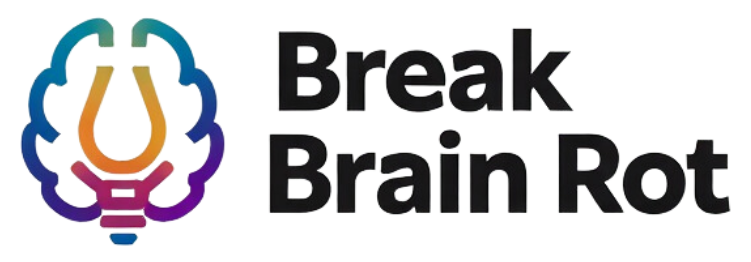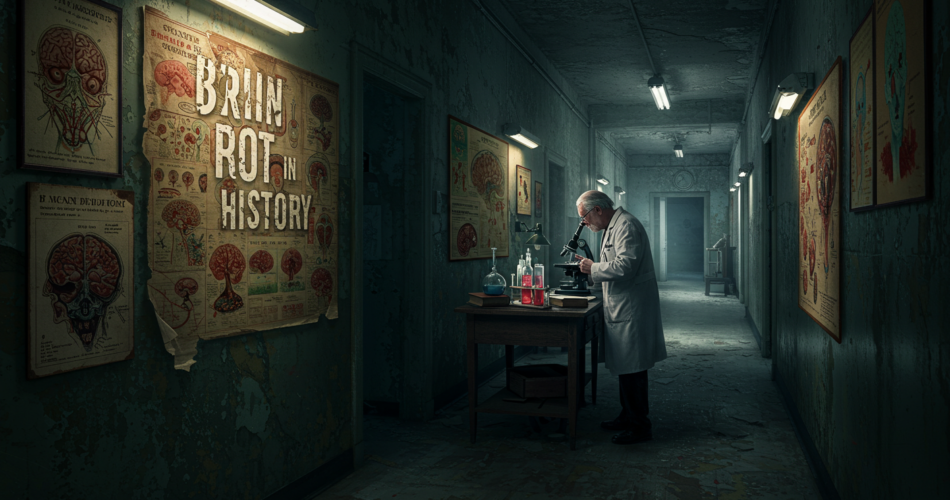From the myths of ancient civilizations to the scientific breakthroughs of modern times, the concept of “brain rot” in history combines literal decay, mental health struggles, and societal collapse. It evokes the unsettling image of a decaying mind—both physically and spiritually—and reflects humanity’s ongoing fears of degeneration on personal, cultural, and societal levels. By delving into its origins and evolution, we unveil a subject that continues to resonate as a potent symbol of decay and transformation. This article explores how brain rot in history intertwines with medical discoveries, psychological insights, and cultural narratives—all while asking: why do we remain so captivated by this sinister idea?
Table of Contents
- The Origins of Brain Rot in Historical Contexts
- Brain Rot as a Medical and Psychological Phenomenon
- Cultural Symbolism of Brain Rot Through the Ages
- How Brain Rot Shaped Historical Narratives
- The Modern Obsession with Brain Decay and Dystopia
The Origins of Brain Rot in Historical Contexts
The concept of “brain rot” has ancient roots, whether as a literal medical condition or a metaphor for the fragility of humanity. It is steeped in mythology, superstition, and the limited knowledge of early science.
Ancient References to “Brain Decay” or Mental Decline
Some of the earliest glimpses of brain rot appear in mythology. Ancient cultures often linked mental decline to divine punishment or spiritual imbalance. For instance, Greek mythological figures such as King Athamas supposedly fell into fits of madness as a curse from the gods. Early medical texts by Hippocrates also suggested that brain illnesses stemmed from imbalances in bodily humors, laying the groundwork for later misinterpretations. [External Source]
Medieval Misunderstandings and Remedies
During the Middle Ages, “brain rot” was understood in terms of humoral medicine and superstition. Madness or signs of mental decline were frequently attributed to moral failings, possession, or curses. Treatments involved gruesome practices such as bloodletting or trepanation to “release evil spirits.” These flawed theories perpetuated stigma and fear around mental health. [Related Topic on Medieval Medicine]
Scientific Evolution in Understanding Brain Degeneration
It wasn’t until the Renaissance and later centuries that scientific developments began to demystify brain degeneration. Advancements in neurology during the 19th century, such as discoveries by Jean-Martin Charcot, brought new understanding to conditions like Alzheimer’s and syphilitic insanity, which were once mistaken for mysterious curses or “rot.” [External Source]
Brain Rot as a Medical and Psychological Phenomenon
Brain rot isn’t just a historical metaphor; it’s a concept that intersects with real medical conditions, mental health stigma, and misdiagnoses that shaped our understanding of neurological and psychological disorders.
Neurological Diseases Mistaken for “Rot” in History
Throughout history, degenerative diseases such as syphilitic insanity or early-onset Alzheimer’s were often understood as moral failings or divine retribution. These illnesses were labeled as signs of “rotting brains,” perpetuating misunderstandings and fear. [Related Topic on Neurological Diseases]
The Psychological Side of Brain Rot
Historically, mental illness was seen not just as a flaw of the mind but as evidence of one’s soul “decaying.” This belief contributed to stigma and allowed society to neglect psychological care. Early psychology struggles, such as debates between Freud and Charcot, spotlighted the blurred boundaries between mental and physical degeneration. [External Source]
Misdiagnosis and Fear Surrounding the Mind
Historical case studies reveal how fear of the unknown brain led to tragic misdiagnoses. For example, women exhibiting postpartum depression in Victorian times were dismissed as having hysteria or “rotted minds,” perpetuating gender biases in medical care.
Cultural Symbolism of Brain Rot Through the Ages
The idea of “brain rot” evolved into a powerful symbol across literature, folklore, and religious teachings—embodying the decay of the individual and reflecting greater societal anxieties.
Brain Rot as Decay Within Society
In literature, rotting brains were often metaphors for corrupt societies. From Shakespeare’s Hamlet to modern dystopian fiction, the idea of mental decline is tied to societal moral collapse, making brain rot a recurring theme in cultural storytelling.
Religious and Moral Implications
Religion often tied mental decay to sin or demonic possession, underscoring moral decay’s connection to brain degeneration. Puritanical beliefs perpetuated these ideas, influencing Western culture’s approach to mental health. [Related Topic on Religion and Morality]
Brain Rot in Folklore and Tales
Folklore from around the globe depicts “rotting minds” as either the cause or outcome of evil forces. In European fairy tales, witches and villains were often portrayed as mentally decayed figures, further embedding the connection between brain rot and danger.
How Brain Rot Shaped Historical Narratives
Throughout history, the idea of decaying minds provided a way to justify fear-mongering, propaganda, and resistance to societal change.
Fear-Mongering as a Tool of Power
The ruling classes often weaponized fears of mental degeneration to discredit marginalized groups. During witch trials and colonialist campaigns, narratives of “brain rot” helped dehumanize populations. [Related Topic]
Revolutionary Movements and Brain Decay
Interestingly, revolutionary leaders sometimes co-opted the brain rot narrative to symbolize the decline of oppressive systems. Metaphors of decayed leadership referenced societal deterioration under corrupt regimes. [External Source]
Brain Rot in Propaganda
Brain rot became a frequent symbol in propaganda, representing the mental degeneration of ideological enemies. This trope was instrumental during World War II and the Cold War. [Topic on Propaganda in History]
The Modern Obsession with Brain Decay and Dystopia
Even today, brain rot remains a fixation in culture and science, driving creative narratives and genuine medical concerns.
Zombies, Apocalypses, and Brain Rot in Pop Culture
The post-apocalyptic image of zombies with rotting brains continues to fascinate audiences, symbolizing societal collapse and humanity’s fear of losing control.
Fear of Neurological Disorders in Modern Life
With rising cases of Alzheimer’s, Parkinson’s, and other degenerative diseases, modern society’s awareness of brain health has grown, fueling fears of literal “brain rot.” [External Source]
Why the Brain Rot Narrative Still Resonates
Ultimately, the fear of brain decay speaks to universal anxiety about aging, mortality, and societal fragility, ensuring the concept remains relevant and deeply ingrained in human consciousness.
Frequently Asked Questions
What are some historical instances of “brain rot” being misunderstood?
Examples include misdiagnoses of syphilitic insanity during the 18th century or hysteria in Victorian women.
How has brain rot been used as a metaphor for societal decline?
Brain rot often symbolized cultural corruption, particularly in stories of dystopia or political decline.
Why is brain rot in history still a fascinating topic today?
It blends medicine, psychology, and cultural history, shedding light on humanity’s fear of decay.
Conclusion
Brain rot in history encapsulates humanity’s most profound fears—of mental decline, societal corruption, and mortality itself. By exploring its historical significance, we not only trace humanity’s progress in medical and psychological understanding but also understand our modern anxieties about decay. Whether symbol or reality, this dark truth remains an enduring reminder of life’s fragility. Stay curious and connect the past with the present, because understanding history can illuminate the fears and challenges of our time.


Thanks for sharing your knowledge; I’ve acquired a lot from your write-up.
I’m thankful for the practical advice you’ve shared that’s based on your experiences.
I like the efforts you have put in this, regards for all the great content.